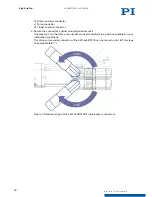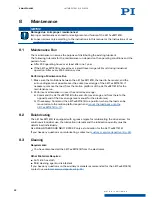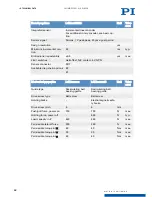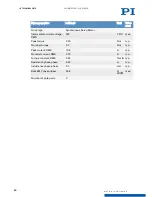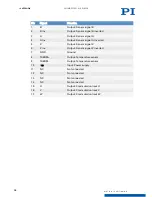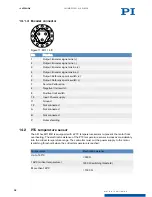
NOTICE
Operating voltage excessively high or incorrectly connected!
Operating voltages that are too high or incorrectly connected can cause damage to the
L-417.xx9211E1B.
►
Pay attention to the
operating voltage range (p. 30)
, which is specified for the
L-417.xx9211E1B.
►
Pay attention to correct
pin assignment (p. 34)
.
NOTICE
Damage due to collisions!
Collisions can damage the L-417.xx9211E1B, the load to be moved, and the surroundings.
►
Stop the motion immediately if an electronics malfunction occurs.
►
If possible, adapt the travel range limits of your mechanical system in the software that
you use for commanding the motion.
NOTICE
Uncontrolled oscillation!
Oscillation can cause irreparable damage to the L-417.xx9211E1B. Oscillation is indicated by a
humming noise and can result from the following causes:
■
The load and/or dynamics during operation differ considerably to the calibration settings.
■
The L-417.xx9211E1B is operated near to its resonant frequency.
►
If you notice oscillation, stop the L-417.xx9211E1B immediately.
Starting and Operating the L-417.xx9211E1B
1. Start the electronics (see the user manual for the electronics).
2. Configure the electronics for the L-417.xx9211E1B during startup:
■
If you are using a digital controller from PI: In the PC software, select the entry in the
positioner database that matches the L-417.xx9211E1B exactly.
■
If you are using electronics from another manufacturer: Configure the electronics
according to the parameters of the L-417.xx9211E1B.
3. Start a few motion cycles for testing purposes (see the user manual for the electronics).
7 STARTUP / OPERATION
L417M0017EN
‒
5/20/2019
21
M O T I O N | P O S I T I O N I N G













